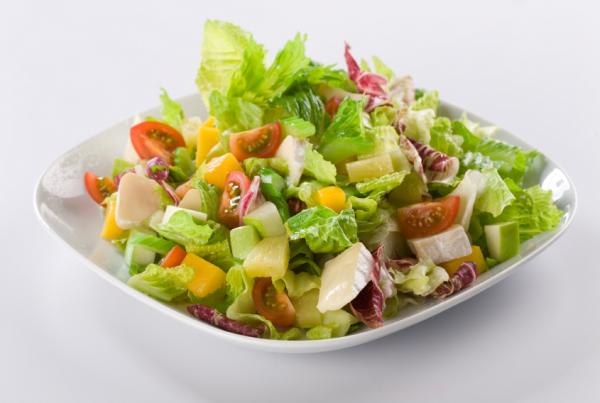
Salad plants
Salad leaves are expensive to buy in supermarkets. Because they’re washed and ready to eat, they have a short lifespan in the fridge. By growing your own, you can pick the exact quantity and combination of colours that you want for each meal.
Most varieties of lettuce are foolproof and can be sown anytime between spring and summer. But by giving the plants protection, it’s even possible to sow seeds in the autumn for tasty leaves over winter. For a continuous supply, sow a few seeds every four weeks.
What to do
How to sow
- Choose a sunny or partly shaded spot, and prepare the soil by digging over, removing stones and then mixing in well-rotted manure or garden compost. This will add nutrients and help the soil retain moisture. Rake to leave a fine finish.
- Seeds often come in ready-mixed packets, so you can recreate your favourite supermarket salad mix.
- Sow seeds in short rows about 30cm (12in) apart. To do this, make a shallow trench with a cane about 1.5cm (1/2in) deep. Tip a small amount of seed into your hand, take a pinch and spread thinly along the trench. Cover with soil, label and water. If birds are a problem in your garden, spread netting to prevent them eating the seed.
- When the seedlings are about 2cm (1in) tall, thin them out to give them space to grow. The distance will depend on variety, but is usually between 15cm (6in) and 30cm (12in).
- Lettuces are perfect ‘fillers’. You can fit a row in between other crops, such as tomatoes, as long as they have enough light.
- Tip: lettuces are easy to grow in containers and window boxes. Simply fill it with a mix of potting compost and John Innes and sow seeds as above.
Aftercare
- Keep soil just moist. This is particularly important when the lettuces are one or two weeks away from harvesting, as dry soil now will cause the plants to put their energy into producing flowers.
When to harvest
- Harvest leaves from cut-and-come again lettuces when plants are about 5cm (2in) high, or allow the plants to grow to about 15cm and cut the whole head off leaving a 3cm (1in) stump – a new plant should soon re-sprout.
- Loose-leaf lettuces need to have leaves harvested regularly to remain productive, while traditional lettuces are harvested by severing at the base or by pulling the whole plant up from the ground.
Five salad plants to try
Apart from traditional lettuces, such as ‘Cos’, ‘Iceberg’ and ‘Butterhead’, there are many others to try, including loose-leaf types and oak leaf lettuce, radicchio, rocket and endive.
- ‘Bijou’ – dark red leaves. Grow as a cut-and-come-again crop
- ‘Salad Bowl’ – loose leaf lettuce with frilly red or green leaves
- ‘Lollo Rosso’ – frilly red leaves
- ‘Kendo’- crunchy cos with red blushed leaves
- Wild rocket – serrated leaves and strong flavour

